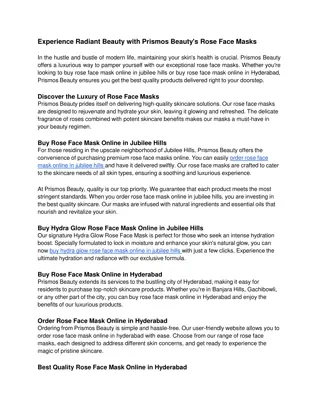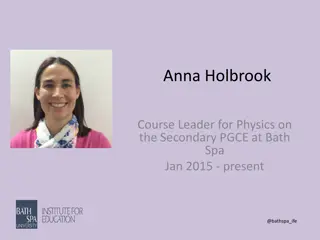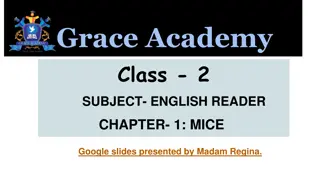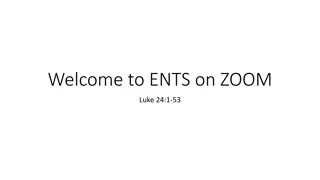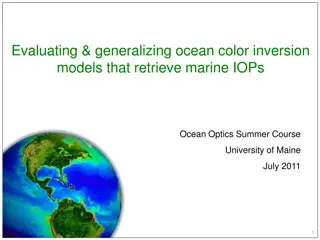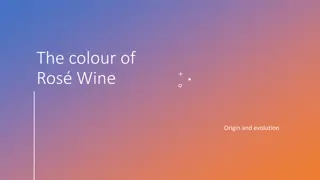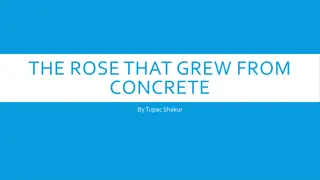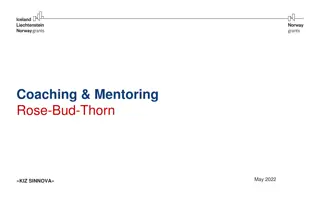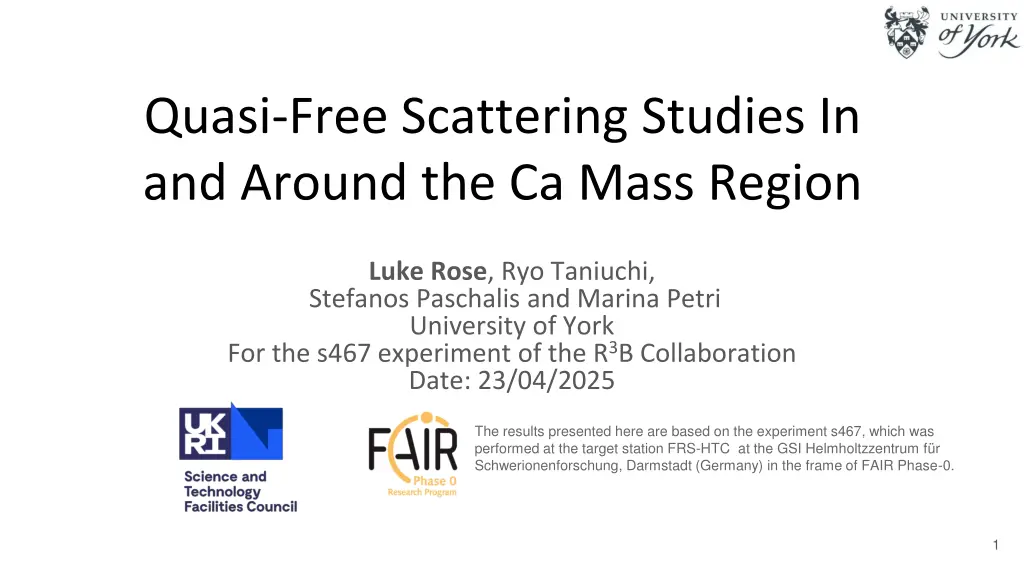
Quasi-Free Scattering Studies in Ca Mass Region - Experiment s467
Explore the Quasi-Free Scattering Studies conducted around the Ca Mass Region by the R3B Collaboration at the GSI Helmholz Center. Learn about the experimental motivation, mechanisms, GSI Beam production, and the experimental setup involved in the study. Discover the innovative approaches used in this research to understand nuclear reactions better.
Download Presentation

Please find below an Image/Link to download the presentation.
The content on the website is provided AS IS for your information and personal use only. It may not be sold, licensed, or shared on other websites without obtaining consent from the author. If you encounter any issues during the download, it is possible that the publisher has removed the file from their server.
You are allowed to download the files provided on this website for personal or commercial use, subject to the condition that they are used lawfully. All files are the property of their respective owners.
The content on the website is provided AS IS for your information and personal use only. It may not be sold, licensed, or shared on other websites without obtaining consent from the author.
E N D
Presentation Transcript
Quasi-Free Scattering Studies In and Around the Ca Mass Region Luke Rose, Ryo Taniuchi, Stefanos Paschalis and Marina Petri University of York For the s467 experiment of the R3B Collaboration Date: 23/04/2025 The results presented here are based on the experiment s467, which was performed at the target station FRS-HTC at the GSI Helmholtzzentrum f r Schwerionenforschung, Darmstadt (Germany) in the frame of FAIR Phase-0. 1
Experimental Motivation Quasi-free scattering (QFS) and transfer reactions show small isospin dependencies. Knockout reactions with nuclear targets would be affected by reaction mechanisms. QFS is a clean reaction and can access wider isospin regions. (p,2p) Quasi-free scatterings Transfer reactions Knockout reactions J. A. Tostevin and A. Gade, PRC 90, 057602 (2014) B. P. Kay et al., PRL 111, 042502 (2013) L. Atar et al., PRL 120, 052501 (2018) 2
QFS mechanism Approximations: Mediated by virtual Pion exchange. Reactions with beam energy 100-1000 AMeV. Small energy transfer. Small angular scattering. Small momentum exchange Both sudden approximation and eikonal approximations are used in the calculation of QFS cross sections. 3
GSI-Beam production GSI Facility Darmstadt, Germany. Ions accelerated in UNILAC. Further accelerated and fully stripped primary beam in SIS18. Extracted and secondary beam production in FRS. R3B setup 86Kr 580 AMeV Cocktail beams to experimental hall https://www-win.gsi.de/frs-setup/ 4
Experimental setup-Cave C GLAD Secondary beam ToF measured by plastics and directed to Focal plane at Cave C. Gas detectors for Z measurement. Multi wires for in beam tracking. Plastics for ToF and veto. CALIFA to tag QFS reactions. NeuLAND for neutron ToF. Target area ToFw Targets: C, CH2, Empty 5
PID-Particle IDentification PID plots for CH2 target. Before target gate on isotope of interest. Reaction PID gate on reaction channel of interest. 6
In Beam Tracking Target position reconstruction for Ca isotopes in target runs using unreacted beam cuts Ion tracking through upstream MWPC detectors to calculate angle of track to be used in momentum reconstruction of ions. 7
Ion Transmission Transmissions probabilities for each isotope for each target setting is calculated. An average empty target efficiency is also calculated. 8
(p,2p) event tagging-simulations Proton 2 (p,2p) angular correlations Proton 1 Califa Geometry: CsI(Tl) Highly segmented Optimised for detection of protons and gamma rays. 9
QFS Event Tagging With CALIFA (Experimental Data) a)20 MeV Clusters b) 10 a)+b)+ c) c) Coplanar cut
QFS (p,2p) Opening Angle Distributions Carbon contributions are subtracted from CH2target runs and then scaled by the geometrical efficiency. Differential cross sections are then plotted and overlaid are the corresponding simulations scaled by the experimental cross section. 11
QFS (p,2p) momentum distributions SP momentum distributions summed using occupancies from IPM. x-component transverse momentum distributions 40Ca case overlaps nicly, 48Ca experimental distributions is narrower than theory. 12
QFS Ca (p,2p) Reduction factors Previously calculated R for AO(p,2p)A-1N Reduction factors for ACa(p,2p)A-1K Shows very weak correlation with nuclear asymmetry. R=Reduction factor: 13
Conclusion and outlook Systematic study of cross sections along the calcium isotopes at ~500 MeV/u. Agreement with Oxygen (p,2p) study by R3B A Very weak dependence on asymmetry is found. Tagging (p,2p) events was successful using CALIFA Thank you for your attention 14 Acknowledgement for the collaboration of the s467 experiment of R3B at GSI/FAIR!

